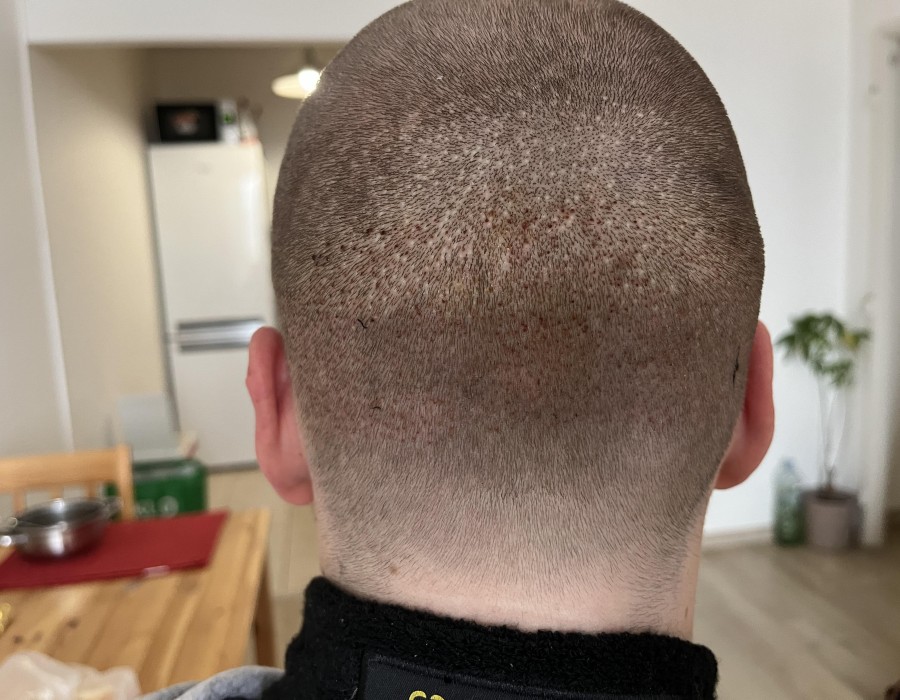Hair loss can affect men at various stages of life, leading many to seek solutions like Follicular Unit Transplantation (FUT). FUT Hair Transplant in Dubaiis an effective procedure for restoring hair, determining the ideal age for treatment is crucial. This guide will explore the factors influencing the best age to undergo FUT, the advantages of early versus later treatments, and considerations for individuals contemplating the procedure.
Understanding FUT Hair Transplantation
FUT, or Follicular Unit Transplantation, involves the removal of a strip of hair-bearing skin from a donor area, usually the back of the scalp. The strip is then divided into individual follicular units, which are transplanted into the balding or thinning areas. This technique is known for its natural-looking results and can effectively restore hair density.
Factors Influencing the Ideal Age for FUT Treatment
1. Degree of Hair Loss
The progression of hair loss is a significant factor in determining the right age for FUT:
- Early Stages: Men experiencing early signs of hair thinning or receding hairlines may benefit from FUT at a younger age. However, premature intervention can lead to unsatisfactory results if hair loss continues after the procedure.
- Moderate to Advanced Hair Loss: Men with more advanced hair loss are typically better candidates for FUT, as they have a clearer understanding of their hair loss pattern and can make more informed decisions about the treatment.
2. Hair Loss Pattern
Understanding the Norwood Scale, which classifies male pattern baldness, can help assess the appropriate age for treatment:
- Norwood Stage I to II: Men in these early stages might consider FUT if hair loss is distressing, but it’s essential to have realistic expectations regarding future hair loss.
- Norwood Stage III and Beyond: Men in these stages often experience more significant hair loss, making them ideal candidates for FUT. The treatment can restore hair density effectively and enhance their overall appearance.
3. Genetic Factors
Family history plays a crucial role in hair loss. If male relatives have experienced early baldness, it’s wise to consult with a specialist before proceeding with FUT:
- Assessing Genetic Predisposition: Understanding your family’s hair loss patterns can help predict your future hair loss trajectory, allowing for a better decision regarding the timing of the procedure.
4. Health Considerations
Age can impact overall health, which is a crucial factor in surgical procedures:
- General Health: Younger individuals may have fewer health complications, making them suitable candidates for FUT. However, older adults can also be excellent candidates if they are in good health.
- Scalp Condition: A healthy scalp is vital for successful hair transplantation. If scalp conditions are present, they must be treated before considering FUT.
Advantages of Early Treatment
1. Preventing Further Hair Loss
One of the benefits of undergoing FUT at a younger age is the ability to prevent further hair loss:
- Timing: Addressing hair loss early may help in maintaining existing hair, as FUT can provide a fuller appearance, especially when combined with medications like finasteride or minoxidil.
2. Psychological Benefits
Hair loss can significantly impact self-esteem and confidence:
- Enhanced Confidence: Young men experiencing hair loss may feel self-conscious. Early intervention with FUT can help restore confidence and improve quality of life.
3. Longer Lasting Results
The sooner one addresses hair loss, the longer they can enjoy the benefits of a hair transplant:
- Youthful Appearance: Men who undergo FUT in their late 20s or early 30s may achieve a more youthful look, which can positively influence personal and professional interactions.
Considerations for Later Treatment
While early treatment has its advantages, there are also reasons to consider FUT at a later age:
1. Stable Hair Loss
Waiting until hair loss stabilizes can be beneficial:
- Informed Decisions: Men in their 40s or 50s may have a clearer understanding of their hair loss pattern and can plan for a transplant more effectively.
2. More Donor Hair Available
In later years, individuals may have a better donor hair supply:
- Optimal Harvesting: Older patients may have more donor hair available, especially if they have maintained a healthy scalp, leading to more successful transplant results.
3. Refined Techniques
Advancements in hair transplant techniques can benefit older candidates:
- Technological Improvements: As surgical techniques evolve, older candidates can take advantage of the latest innovations in FUT, ensuring better results with fewer complications.
Ideal Age Range for FUT Treatment
Late 20s to Early 30s
This age range is often seen as the ideal window for FUT. Men experiencing noticeable thinning or receding hairlines may benefit from addressing their hair loss early. However, thorough evaluation and realistic expectations are crucial.
Mid to Late 30s
By this age, many men have experienced a clearer understanding of their hair loss pattern. Those with moderate hair loss can successfully undergo FUT, as they have more donor hair available and a better grasp of their future hair loss trajectory.
40s and Beyond
While FUT can be performed on older men, careful evaluation is necessary:
- Good Health: Older candidates should be in good health and have realistic expectations regarding the procedure and recovery.
- Stable Hair Loss: If hair loss has stabilized, men can achieve excellent results with FUT.
Conclusion
Determining the ideal age for FUT hair transplantation involves various factors, including the degree of hair loss, genetic predisposition, overall health, and personal preferences. While many men may consider treatment in their late 20s or early 30s, others may find success in their 40s or beyond. The key is to consult with a qualified hair restoration specialist to assess individual circumstances and make an informed decision. Ultimately, the goal is to achieve a natural, full head of hair that enhances confidence and quality of life at any age.






Comments